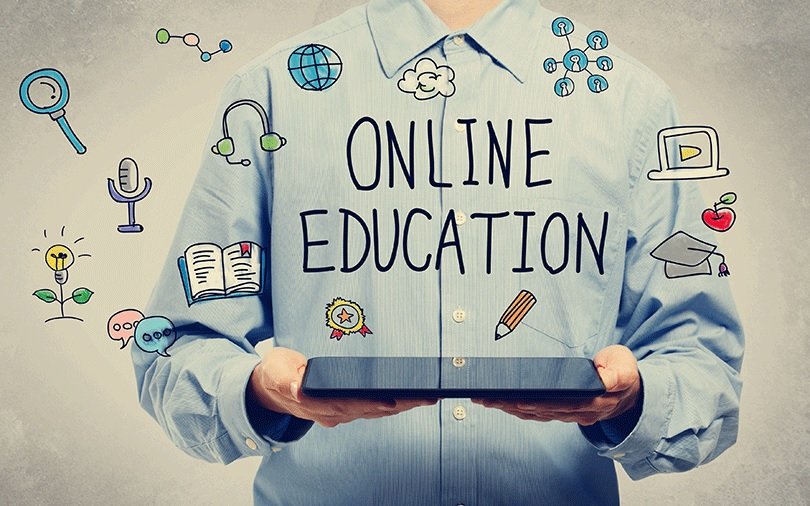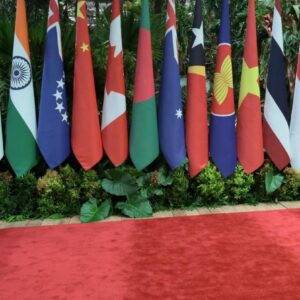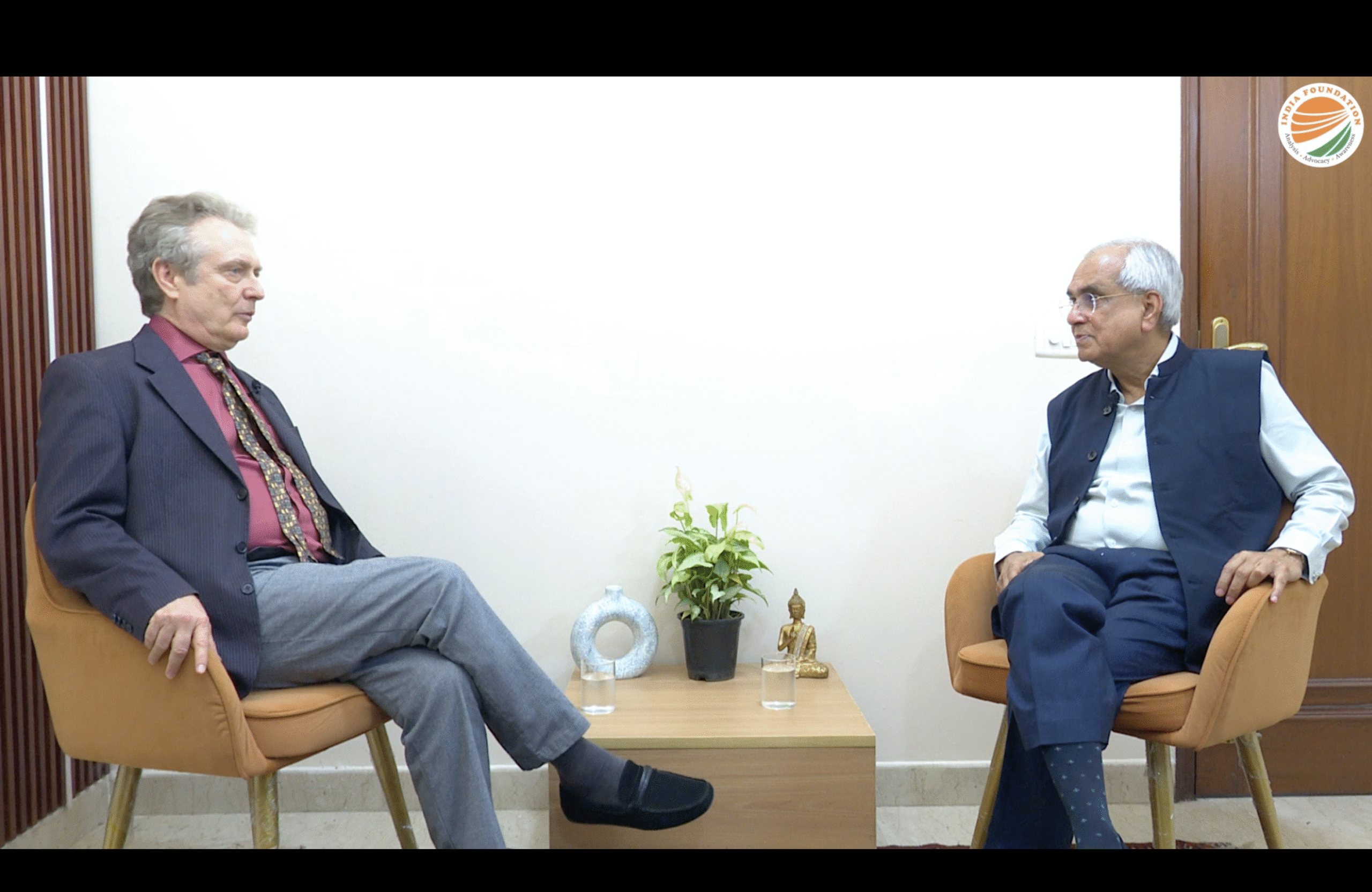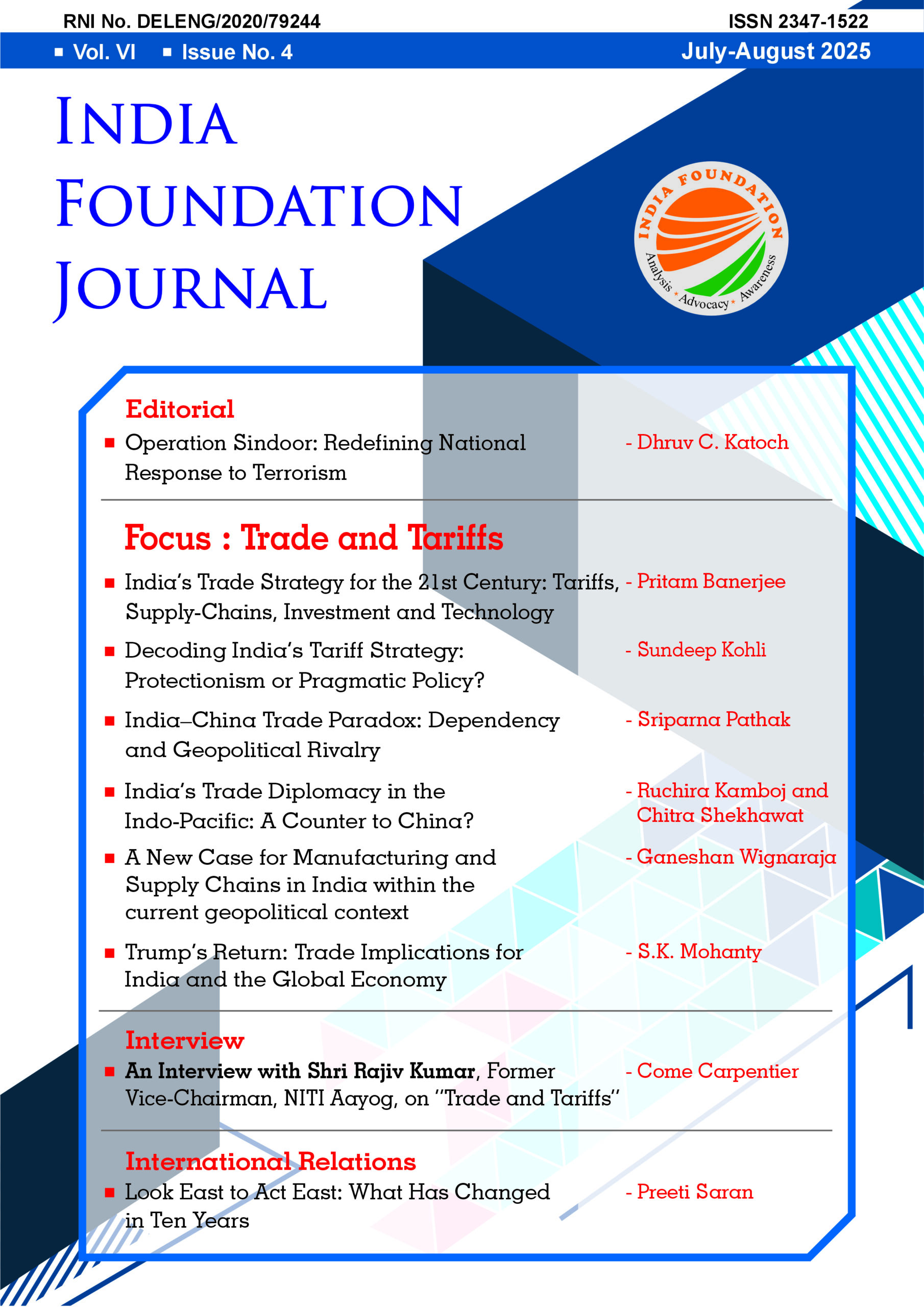Abstract
Education is the key to everything. It can mould a person’s behaviour and with the right idea of the world he/she can then lead a sustainable life. Higher education is very important for innovation and economic development. MOOCs are one way in which education can be guaranteed for all and for those who are already privileged enough who can take education to the next level. The aim of this paper is to sum up how online education platforms like MOOCs with its e-content can contribute to Sustainable Development Goal 4 (SDG 4) of agenda 2030, because when education is taken care of, all the other SDGs like poverty, health, hunger, gender equality etc. are not anymore at a risk. Recently the pandemic has changed the whole idea of education. The paper also illustrates how MOOCs started off as free education to all and gradually moved on to being commercial and has affected the socio-economic balance in the time of digital divide. The paper concludes with implications on how the millennial generations can help each other with their education and how MOOCs can widen its participation by including learners from every section of the society.
Introduction
‘Education for All’ has been a vision of the UN since the 1990’s. It started with the Millennium Development Goals, which now stand superseded by the Sustainable Development Goals (SDGs). Until last year, the last big innovation that happened in education was the printing press and the textbooks, but with the pandemic the whole idea of education has changed and is evolving. Covid-19 has forced us to rethink the methods of teaching and learning. The only issue now is in terms of development of e-content and in terms of access to such content by students in the rural areas.
The drastic change in the education system today could not have been even imagined a few years back. Each student, from the primary to the graduate level, learns with their own electronic gadgets and teaching and learning is happening from different parts of the world. MOOCs had envisioned this in 2008. Before MOOCs, while we did have distant education where people did correspondent courses, but not everyone completed those courses. MOOCs now promise increased access to education.
During its initial years, MOOCs tried to bridge the gap and brought people together around common goals. The main aim was to include people who were traditionally excluded from higher education as this would lead to an increase in social inclusion. People would get training for more skilled jobs, wealth and prosperity. There were no limits to the number of people who could join a class.
However, during the second wave of MOOCs, there was a change from free to fee- paying access to get certificates for courses. This had deviated MOOCs from their aim to promote free education for all. Some examples are the major MOOC providers like Coursera, Udacity and edX. Coursera and Udacity offered to give verified certificates of completion for all those learners who paid a particular amount while edX began to establish partnership with universities to teach MOOCs in their for-fee classes.
Even though the second wave led to a slow growth of MOOCs, it was still considered important for students’ learning. In India, an initiative in the name of SWAYAM was launched by the Ministry of Human Resource Development (MHRD). SWAYAM is an acronym for “Study Webs of Active Learning for Young Aspiring Minds.” The main aim of SWAYAM is to provide free entry to web courses and cover all the advanced education, schools and skill sector courses. Promoting these MOOCs will help students get a wider knowledge on the subjects. As there are no boundaries to the classroom, students can interact with a larger community from different parts of the world. It can also remove the time and place barrier restrictions and bring equality in education.
The MOOC platform is also an important factor to achieve SDG 4. It can bridge the gap between the digital divide and help to provide education for all. When everybody is educated, there would be a change in the human society itself. The achievement of other SDGs is also facilitated with the help of growth in education. As said earlier, every online class has four quadrants through which they make teaching easier, known as the e-content. The SWAYAM portal has four quadrants of e-content called e-tutorial, e-content, assessment and discussion. When these are provided with minimal restriction to every student, there would be equity in education.
Most of the online platforms today have become popularly known for their content. The content provided by them makes it easier for the students to learn and execute things. MOOCs and other online study platforms have a four-quadrant approach to learning. These four quadrants help learners from every discipline be it science, math, arts or skill-based studies; all are equally benefited. The e-content includes classes with interactive sessions, 3D model explanation of working models for skill-based learning and many other benefits. All these lead to a large number of learners participating from around the globe.
Background
MOOCs have, through all these years, created a learner led environment. Learners can study from esteemed universities in any part of the world. Few factors that have led to the rise in use of MOOCs are as follows:
- Digital service at our fingertips.
- Data never sleeps: no particular time to access data.
- A data hungry generation: Always looking forward to improving themselves.
- Pandemic has made it even more important.
- Universities provide 20% credits for online courses.
When everything happens through digital services, they are compelled to provide the best resources to their students. In developing countries like India, it would be even more difficult to include everyone in online classes. There are students with no access to the internet and some students, even though they have network facilities, have no clear idea on how to use these online platforms. But MOOCs have their own advantages and disadvantages when it comes to e-content and e-learning.
MOOCs and its E-content
E-content will transform teaching and learning, as the future is going to be blended learning—that is both face-to-face and online learning. The courses that were provided face-to-face have to be now transformed to suit the new normal. It requires us to rethink the learning design. The four quadrants of MOOCs:
- Quadrant 1: e-Tutorials contain video, audio, animation, video demonstrations and most of the time these videos also include transcription.
- Quadrant 2: e-content which contains e-books, web resources, online educational resources in the form of links, articles and case studies etc.
- Quadrant 3: Assessment that has multiple choice questions, assignments, quizzes, problems and solutions etc.
- Quadrant 4: Discussion forum for raising doubts and clarifying them on a real time basis.
Including New Designs to Improve Teaching and Learning
Rethinking the Current Syllabus: This would be a very good opportunity to rethink the current syllabus and make it suitable for blended learning. It would be easy for the students if the syllabus is detailed and made comprehensive. Creating a syllabus quiz can also make learning easier and help the students understand the topic better, before moving on to the next one.
Organising the Content: It would be a great time saver if the content is organised on the basis on which they are to be taken. For example, a chapter in a subject can be divided on the basis of their topics and organised in google drive folders with a common link access. This makes it easier and time saving for the teachers and students to access the resources like pdf and eBooks while learning.
Orienting the Learner: This method would be particularly useful today as most of the students who do not have face to face contact with the teachers can have an orientation section where the subject is explained in detail to enable the student to better have a better grasp over what is being taught.
Moving beyond PowerPoint: More features like audio descriptions can be added to the power point presentations to make teaching more clear and test series can also be added at the end of every chapter.
Rethinking the grading strategies: Students can be graded on the basis of their critical thinking skills and their participation in the classes. Feedback can also be added because it would benefit both the students and teachers in improving the process of learning.
Barriers to E-learning and E-content
Language and communication barrier: MOOCs is a large platform and students get a lot of exposure while interacting with other students from around the world. However, learners with limited command of the common language would find it challenging to understand the instructions, which could lead to reduced participation in discussions. This can partially be offset if instructors limit the use of jargon words and if possible, use different dialects while taking classes.
Online classes tend to focus more on theory than practice: This has no proper solutions as the maximum that could be done is to get as visual as possible with the help of technology by using 3D animations etc.
E-learning requires strong self-motivation and time management skills: Building strong self-motivation and disciplinary skills is key to succeeding in an online learning environment. Additionally, face-to-face communication with professors can be substituted with online communication, and peer-to-peer activities could be promoted online, as in traditional classrooms.
Online learning is inaccessible to the computer illiterate population: Finding a solution to this problem is not an easy task. However, initiatives such as ‘Digital India’ show promise in improving computer literacy. In the era of technology, online classes are making a mark, but since India is a developing country, the knowledge and distribution of resources is uneven among the population. Therefore, more efforts have to be put to match up and maintaining the standard of education as online education is the next big thing in the near future.
These are some of the basic features that need more concentration as it will help MOOCs to provide equal education to all.
Analytical Discussion
The new MOOCs have to not only achieve SDG 4, but also deal with global challenges. The results for the latter have not been very encouraging and the pandemic has further hindered the effort. With a few pilot studies and new ideas, this study has tried to summarise how MOOCs can help to achieve each target of SDG-4. The reviews are summarised in subsequent paragraphs.
Basic Education to Children: Having access to primary education is a fundamental right of every citizen of our country. The literacy rate has improved during the past few years, but like in the case of the rich becoming richer and poor becoming poorer, people who are privileged benefit more from online learning. Also, the urban and rural divide and children from the conflict zones miss their primary education due to multiple reasons. This gap can be bridged by MOOCs by taking education to the next level and making it accessible for underprivileged people. Even in conflict zones, MOOCs can provide easy access to primary education and improved access to learning materials and resources.
Gender Equality and Social Inclusion: The primary objective of MOOCs is to provide education to those who lack access to learning. MOOCs can help in inclusive learning by giving women and girls improved access to education. MOOCs have the potential to democratise education by providing learners with access to high-quality and free online courses. In India, Indira Gandhi National Open University (IGNOU), has established special study centres for some identified groups (Women, minority community, physically challenged, rural community, residents of remote and isolated areas, scheduled castes, scheduled tribes jail inmates etc) which are outside the pale of formal education. The Study Centers are using successful MOOCs mediums to make education more inclusive. So, MOOCs tools ensure easy access to education for all, which in turn promotes inclusive education.
Youth Population and the Time Bank: Taking examples from countries like Switzerland where they have a ‘Time Bank’ scheme to look after the elderly by the younger population, the model can be adopted in high populated countries like India to help students in their education. The students with easy access to the internet and access to high-end education can, through NGO volunteers, teach students belonging to the weaker sections. This would be a great help to people with limited or nil access to learning resources. As Ann Frank once said, “Nobody becomes poor by giving”.
Scholarships: In line with the SDG 4 Education 2030 focus on equity, inclusion and quality, scholarships should be transparently targeted at young people from disadvantaged backgrounds. With tuition rates rising at an average of 3.5% every year, scholarships are one of the best ways to reduce these growing costs and scholarship search platforms exist to help students find the most relevant ones. Online platforms are the easiest way to search and apply scholarships worldwide. Though we still have some way to go in providing scholarships to the less privileged sections of society, these challenges can be overcome. Communicating with concerned professors, having information on scholarships, preparing proposals and related works are means which are being given much greater emphasis than hitherto fore, through extensive use of online platforms.
Teachers and Educators: ‘MOOCs have the potential to revolutionise the way we teach and how we learn’. Over the past few years, MOOCs have become a vital source of expansion and studying in education. Due to the opportunities created by MOOCs, teaching and learning can now happen at any time and in any place. The explosive growth of the World Wide Web (WWW) has made information technology a popular platform for providing e-services, MOOCs service (Richard & Haya, 2009; Fry, K., 2001). MOOCs could be an effective tool for transferring knowledge and it has a potential to overtake the traditional teaching method. Web-based training helps facilitate learners and instructors in an educational environment. Tao et al. (2006) really thought that this new learning environment was centred on electronic networks had found a way for undergraduates to have learning schedules that are more suitable for them as well as separate from other students (Tao, Y. H., Yeh, C. R., & Sun, S. I., 2006). With the development of computer and internet technologies, this technology has a higher interaction and collaboration level between instructors or lecturers and peers than the traditional environment for learning (Giddens, A., 2001). Hence, MOOCs systems might be able to deliver a broad array of solutions to enable learning and improve students’ performance. There are a number of advantages for using this technology and learning materials in the university classroom (Hassan, M. S., 2007): More active learning class, diversified teaching method, better student attention and realisation, effective time management for lectures, and visual stimulation. The major advantage of MOOCs lies in its flexibility and ability to cover distances. The curriculum can be repeated until it is understood by the students. Hence, full time and part time undergraduates can take part in their degree courses selected from any place or location, so students can gain multiple learning ways depending on their needs (Aggarwal, D., 2009). Above analysis clearly indicates that MOOCs are a handy way to attain every target of SDG 4 and eventually the Sustainable Development Goals (SDGs).
Cost: Depending more upon e-content means spending less on books. According to the analysis, more than 25% of the academic fee of a student is spent on buying textbooks and other materials. The lower costs and free enrolment are also making more students prefer online learning.
Challenges to attaining SDG 4 through MOOCs:
- Since tests for assessments in MOOCs cab be done with the use of proxy, it is very difficult to regulate bad activities like cheating.
- MOOCs depend on technology a lot. Therefore, equipment failure is an obstacle to implementing proper MOOCs.
- Cloud computing facilities are not familiar to each and every user.
- While MOOCs might look like a learning tool available to anyone, in reality, it’s not. Not all people have stable internet access and computers that are powerful enough to support online streaming.
- Since MOOCs are based on internet technology and it creates a virtual “class room” for the students; therefore, it depends on internet connection. Also, this technology requires students to have massive technical skills and internet connection with high bandwidth to download the materials from the courses and upload their tasks or work with e-system.
- Some might have all the necessary technologies but may still struggle to use it. For example, older students might find it hard to master all the newest tech gigs. This problem, however, can be solved by offering them proper tutorials.
- Being able to learn at a comfortable pace and organise one’s own learning is a disaster for some students. While some are good in self-organisation, others cannot do this without having a clear deadline on writing a term paper and the need to report their progress to the teacher. Some others can do so but still feel better working and learning around people because it motivates them more.
- The feedback is one of the biggest drivers of students’ progress. The students are able to improve only when they know their flaws and weak points. While online instructors do give feedback to students, they still might not have enough time to work with them properly, explaining every detail. This could lead to some students falling behind, having gaps in their knowledge, and not completing the course successfully enough.
Conclusion
The present academic year has seen a lot of changes from the traditional classroom. Every student and teacher can now study and learn from the comfort of their home through online education. This was unimaginable just a few years earlier. While it can be easy for the privileged section of the society but there is a different side to online education for people from a not so privileged background. To combat this problem, some measures can be taken in the conflict zones like:
- Improve the infrastructure, so that online courses can be developed for teacher education. This would lead to a significant change in higher level education.
- Assess the internet connectivity in the region and check if it is enough for taking online classes.
- Try and include online classes from the primary level as a part of their curriculum.
- Conduct a study on how we can better put into use the current education system and learning management system.
MOOCs have brought a revolution to the idea of education. Earlier most of the schools just had one huge hall for smart classroom and just a few minutes were given to study things outside their books, but the future seems to be different every school and college is going to now have a smart classroom with a system for every student and just one lecture hall for the face – to- face discussions. It would be complete if the classes for the differently abled were also added to MOOCs so that we could without any doubt call it “Massive Open Online Course”.
Author Brief Bio: Dr. Santhosh Mathew is Assistant Professor at Centre for South Asian Studies, Pondicherry Central University, India.
Reference
- Aggarwal, D. (2009), Role of e-Learning in A Developing Country Like India. Bharati Vidyapeeth‘s Institute of Computer Applications and Management, New Delhi, India
- Giddens (2001), A.:Sociology. 4th ed, Cambridge: Cambridge: Polity, Global Goals. (2015). ‘The Global Goals for Sustainable Development: Goal 4 Education’. Retrieved from http;//www..globalgoals.org/global-goals-education
- Hassan, M. S. (2007), Critical success factors for e-learning acceptance, Elsevier Computers& Education, 49, pp. 396–413,
- Richard & Haya (2009), Examining student decision to adopt web 2.0 technologies: theory and empirical tests. Journal of computing in higher education, 21(3), 183-198
- Tao, Y. H., Yeh, C. R., & Sun, S. I. (2006), Improving training needs assessment processes via the Internet: system design and qualitative study. . Internet Research, 16 (4), pp. 427–49.
- Lambert S R. (2018, November,26). Do MOOCs Contribute to Student Equity and Social Inclusion? A systematic review 2014-2018. [ Center for Research in Assesment and digital learning, Deakin University] Retrieved from https://doi.org/10.1016/j.compedu.2019.103693




